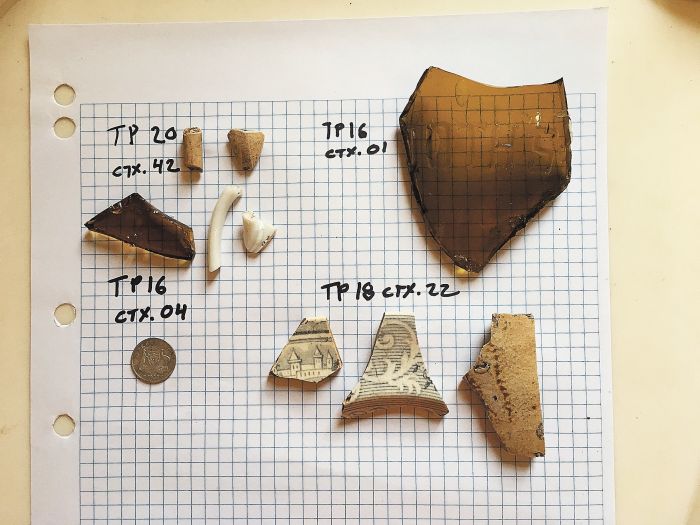
The site for the new museum is on the old tennis courts on University Avenue and the goals for the dig were many. Firstly, we wanted to provide a practical, fun, hands-on experience for the students, and then to collect information on the site where the museum will stand. We were also hoping to locate artefacts that might form part of the Nicholson Museum’s teaching collections.
The test pits were dug by the students working within the NSW heritage guidelines and our Campus Infrastructure and Services (CIS) health and safety conditions over four weekends. Previous surveys of the area had revealed that there was little to no potential for recovering significant relics, even so the dig was carried out to ensure that we would not disturb anything of state significance.
While the overall site was quite disturbed, the students did find a few artefacts of note: A 1927 silver three pence coin, a few shards of Rhine pattern ceramic dishes, some tobacco pipe fragments, and a brown glass fragment with the letters “OTHS” embossed on its surface which would have come from the former Tooth’s Brewery which stood down the road on Broadway from 1835 until 2005.
This fun, engaging and instructional experience not only provided materials that we will be able to use in our Nicholson Museum teaching collections but also provided students and volunteers with a glimpse of the history of the University.
The history of the site also acknowledged the story of tennis at the University. The University of Sydney Quadrangle, complete with its carefully manicured lawns, picturesque scenery and sandstone structures, was once home to a tennis court back in the 1890s.
At this time it provided a vital forum for males and females to meet without direct supervision. It developed out of the notion that tennis was a game of gentility, where males and females could play together in mixed doubles.
Shortly after the courts were opened, a ladies tennis club was opened by students which led to the creation of separate clubhouses and was an early assertion of equity.
The dig and its findings will form part of the interpretation of the location of the new museum, alongside the more widely acknowledged stories of the traditional owners of the land, the Gadigal people of the Eora nation, the establishment of Grose Farm and the founding of the University.




